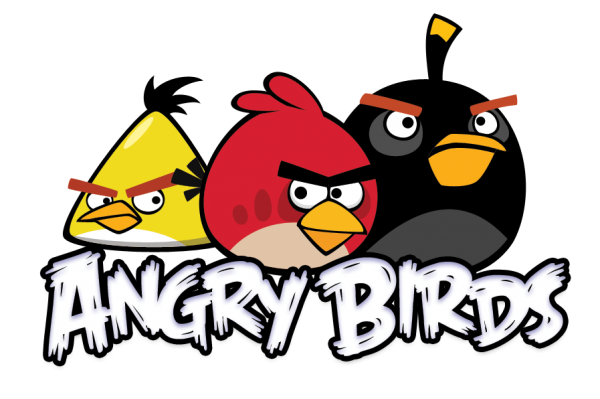- Concept of the Game 🔥
- Description of the Game 🎮
- Organization of code 📚
- Main Challenge ⭐️
- Issue and Known Bug 🐞
- Reference 🌿
git clone git@github.com:yumin-jung/angry-birds.git
cd angry-birds
npm i
npm run devAngry Birds is a action-based video game created by Rovio Entertainment.
The game series focuses on a flock of birds who try to save their eggs from green pigs.
| Red | Chuck | Bomb | Hal |
|---|---|---|---|
 |
 |
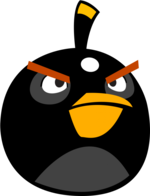 |
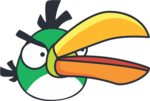 |
| Cute | Speed Up | Bigger Size | Boomerang |
| Minion | Corporal | King |
|---|---|---|
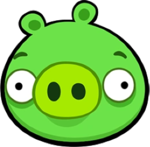 |
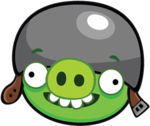 |
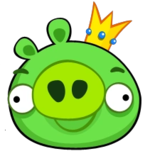 |
| The Smallest Size | Medium Size | The Biggest Size |
-
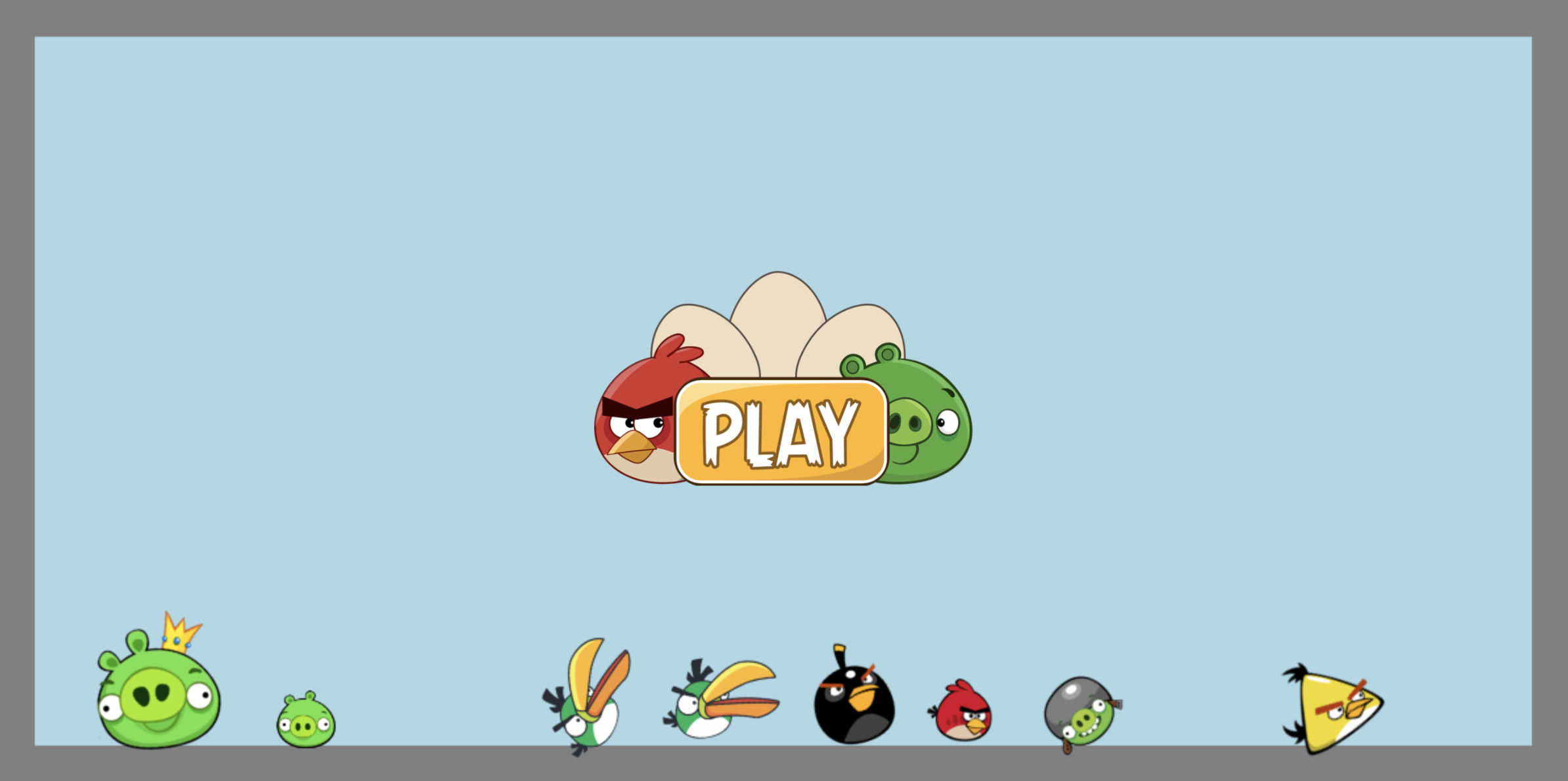
- When user clicks screen, character of Angry Bird randomly falls from the sky.
- User can move the characters on the screen by dragging.
- When click the play button, user go to
Stage Select Screen
-
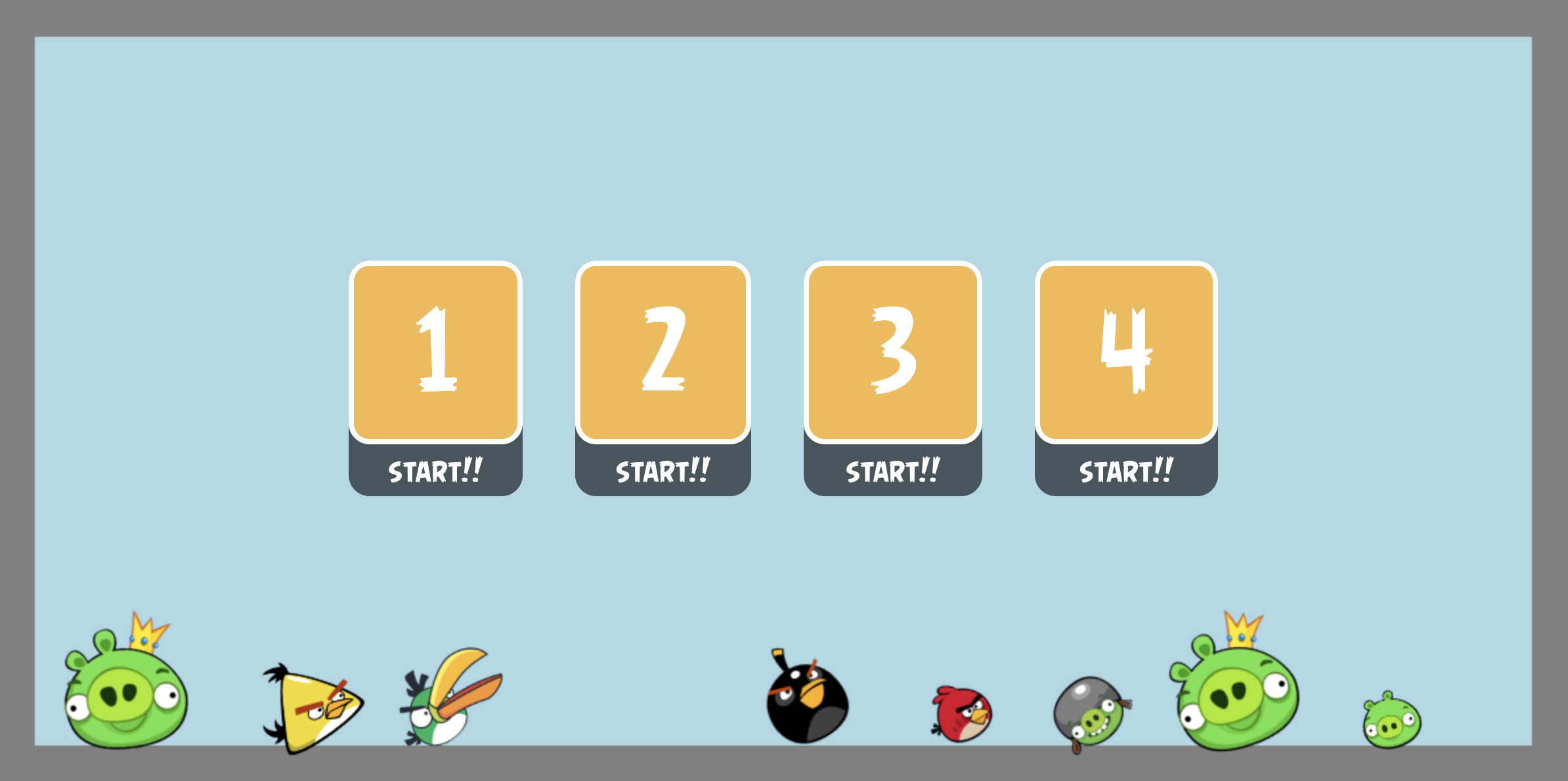
- The characters created on the
Home Screenremain in the background. - User can enjoy them with clicks and drags like
Home Screen. - When click the stage button, user go to corresponding
Stage Screen.
- The characters created on the
-

- A slingshot and a bird are on the left side of the stage screen.
- User can fire the bird by dragging slingshot back.
- User must adjust the angle to get the pig out of the screen.
- Remaining birds are displayed on the left side and are reduced one by one when the birds are fired.
- To use each bird's ability, user have to press the space bar.
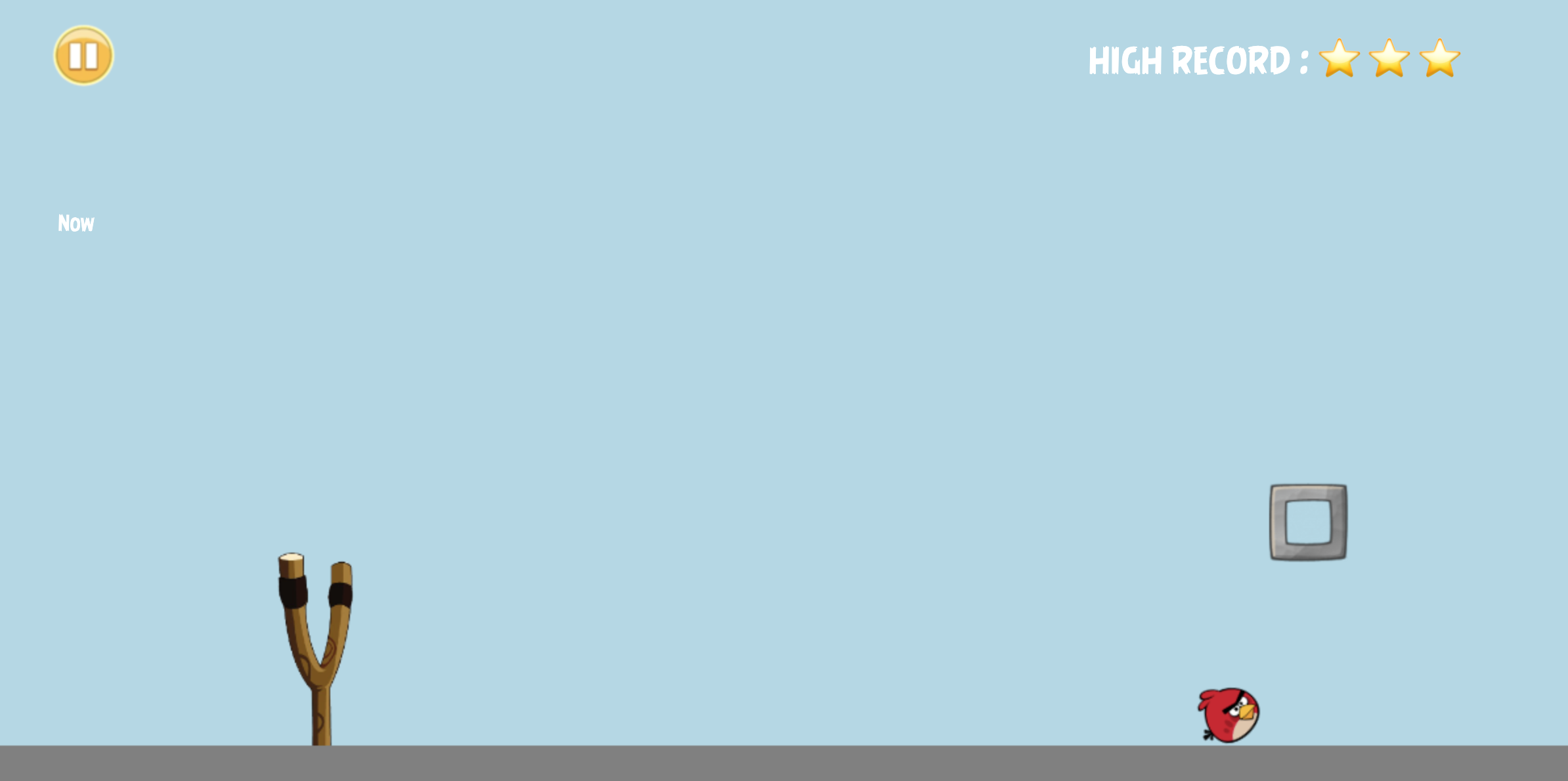
- If the pig goes out of the screen, user get score.
- When user press the pause button, user go to corresponding
Pause Screen.
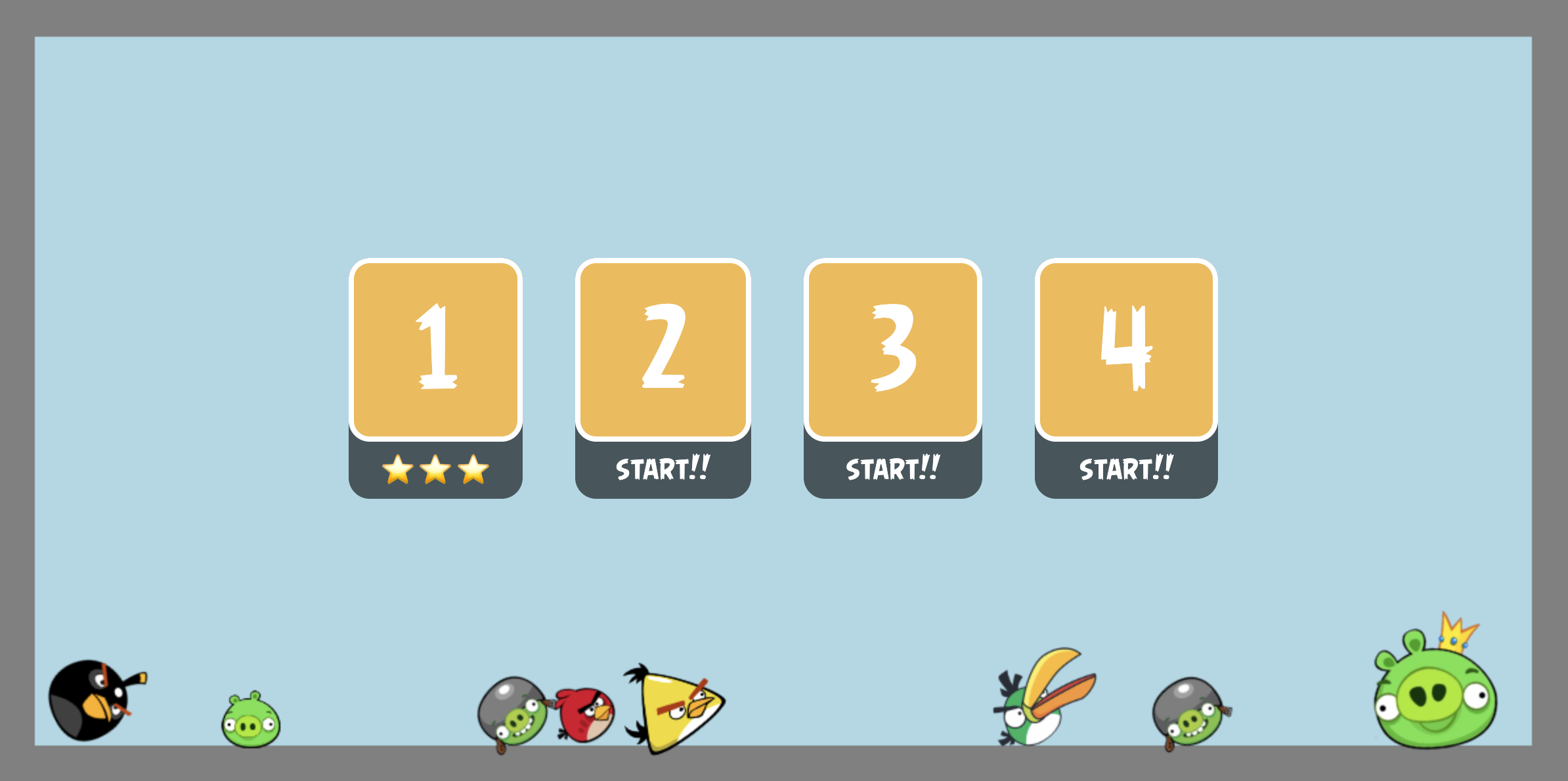
- When the user records the highest score, the highest score appears on the stage
Select Screen.
-
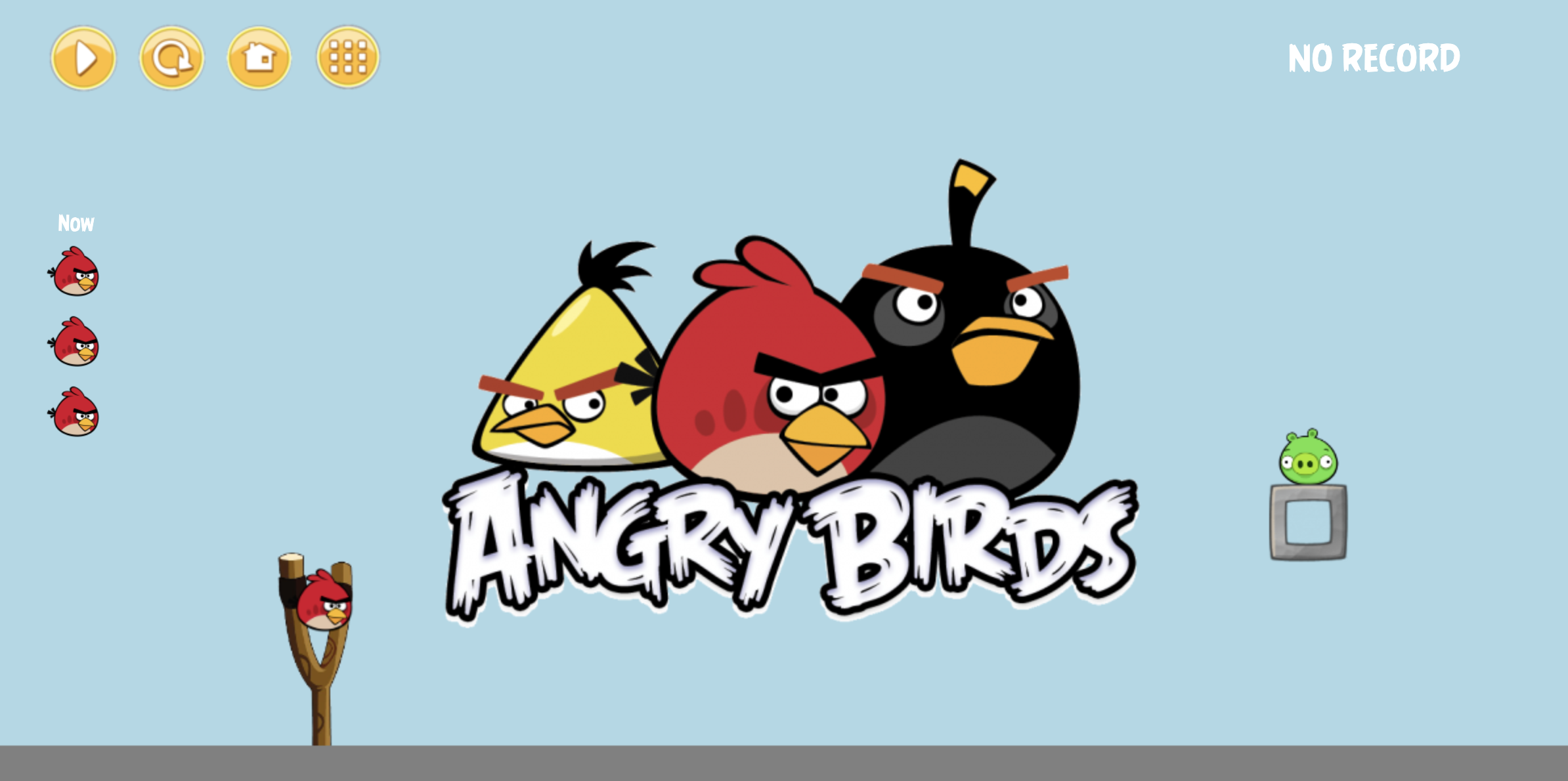
- There are four buttons.
- Play button
- Restart button
- Home button
- Stage select button
- Users cannot click on the game screen and must select one of the four buttons.
- When user press the button, go to the corresponding screen.
- There are four buttons.
This is UML of my implementation.
-
Functions in main.js
getStage()- Add composites of stage and firing events
resetStage()- Reset stage and change state of stageName
firingEvents()- Check firing events
setup()anddraw()- Using loop() and noLoop() function from p5.js library
- Used to make the user feel like the screen is switching.
-
Functions in stage classes
getComposites()- Return composites of stage
updateScore()- Transmit remaining birds and scores to the ScoreDisplay class.
firing()- When the bird is fired, place the new bird on the slingshot.
-
Functions in bird classes
ability()- Activate the ability of a bird
-
Molecules classes (Bird, Box, Elastic, Ground, Pig)
- Base class of specific character
-
Stage Classes (TutorialStage, PyramidStage, TwoPyramidStage, BoomerangStage)
- Add the bodies corresponding to each stage to the canvas
- Manage the bird firing process
- Manage scoring system with ScoreDisplay class
-
ScoreDisplay
- Receiving a score from the stage
- Display high record on the game screen
- Atomic design pattern helps to build consistent, solid and reusable design systems.
- Advantages when developed according to the atomic design pattern.
- Increase the
productivityof development. - Reduce
errorand error-prone code.
- Increase the
- Scores were exchanged between score display and stage
- Make the code more simple.
- Different parts of code speak to each other.
- Each stage was constructed using the factory design pattern.
- When the stage was restarted, implementation through the factory design pattern was able to make the code more concise.
- All characters and structures of the game were implemented as classes.
- Make available to use each other by importing or exporting them through modules.
- Different parts of code speak to each other.
The main challenge of the project is,
Implementing slingshot same as the actual Angry Birds'
Therefore, I using some of the methods of Matter.js library for implementation.
Make slingshot look more like real Angry Birds'!
- Image of slingshot used in real Angry bird should be used in the render canvas of this game.
- --> But, bodies are affected by each other in Matter.js render canvas.
- --> Therefore, solved by making the actual body size smaller and only the size of the render image larger.
- Make left and right elastic band of slinghot by Constraint method of Matter.js
-
In addition, adjust color and thickness of the elastic band look more like real Angry Birds'.
// Elastic class class Elastic extends Body { constructor(x, y, bird) { super(); this.bird = bird; const options = { pointA: { x: x, y: y }, bodyB: this.bird, stiffness: 0.05, render: { type: "line", strokeStyle: '#120E0A', lineWidth: 8 } } this.body = Matter.Constraint.create(options); } }
-
Make slingshot function more like real Angry Birds'!
- Function of a bird to fire from a slingshot
-
Firing birds with using position of the bird that the user dragging
// Events detector in firingEvents function Events.on(mouseConstraint, 'enddrag', function (event) { stage.flyingBird = stage.bird; stage.slingshot.elastic1.body.render.visible = false; stage.slingshot.elastic2.body.render.visible = false; if (event.body == stage.bird.body) { firing = true; stage.remaingBirds -= 1; } }) Events.on(engine, 'afterUpdate', function () { addScore(stage) if (firing && Math.abs(stage.bird.body.position.x - BIRD_X) < 20 && Math.abs(stage.bird.body.position.y - BIRD_Y) < 20 && stage.remainingBirds > 0) { stage.firing(engine.world); firing = false; } })
-
Check the bird has been fired and connect the new bird to the slingshot.
// firing function in TutorialStage class firing(world) { ... this.remainingBirds -= 1; if (this.remainingBirds == 0) { slingshot.elastic1.body.bodyB = null; slingshot.elastic2.body.bodyB = null; Composite.remove(world, slingshot.getLeftElastic()); Composite.remove(world, slingshot.getRightElastic()); } else { let newBird = new RedBird(BIRD_X, BIRD_Y, 20); this.bird = newBird; bird = this.bird; Composite.add(world, bird.getBody()); slingshot.elastic1.body.bodyB = bird.getBody(); slingshot.elastic2.body.bodyB = bird.getBody(); } }
-
- When user drags a bird from a slingshot, it does not support mouse event outside of the render canvas.
